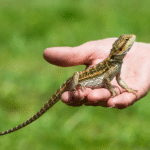The eco-friendly movement has really taken off in the last few years and many households are choosing to try it out.
An eco-friendly backyard garden is one of the options you can choose for yourself and your family if you want to lead a healthy life. These are the steps to take to maintain it.
1. Choose appropriate veggies and fruits
Certain types of fruits and veggies complement each other when they grow close. That way, they will produce the best growing results and you won’t be tempted to add artificial fertilizers.
Carrots and spring onions should be planted close to each other, chives and tomatoes, as well as cucumber, radishes, and dill. Usually, the scent of one plant deters the pests of the other plant growing nearby.
2. Help pollinators
Pollinators react best to plants growing naturally in your region while exotic plants could harm the native plants and even insect species.
So, stick to native plants and leave small areas for wildflowers, which are perfect for pollinators and other beneficial insects. Flowers like candytuft, sunflower, and marigold create places where lacewings and ladybugs can lay eggs.
3. Create your own compost
Organic compost is not difficult to make in your own backyard. It will provide your plants with nutrients without any synthetic fertilizers.
Coffee grounds are a good start to your compost pile because the nitrogen in them helps the plants grow. Other materials you can add to your compost are eggshells, straw, leaf clippings, fruits and vegetables that are too ripe, as well as untreated wood chips.
4. Save water
Water is a precious resource and being eco-friendly about it means to use it only when necessary and use it mindfully. Every time before you water your garden, dig a small three-inch hole in it and feel with your finger if the water is moist. If it is, wait with using the hose reel for the garden – there is no need to soak the soil more and waste precious water. You can also collect rainwater in a rain barrel or any other container and use it to water at least some of the plants.
In case you are also using sprinklers, always put them on timers. You could consider installing a drip irrigation system that will direct water into the soil where your flower beds and trees are.
5. Plant trees for oxygen
Even though every plant uses CO2 to produce oxygen, trees are much more effective due to their size. No one expects you to plant a forest in your backyard but if you are thinking of planting a tree or two, there are some which are more effective at absorbing carbon than others.
Yellow poplar trees, oak, and pine are particularly good at this. If you don’t want to plant any of these, you can make your pick among blue spruce, horse chestnut, silver maple, red mulberry, or dogwood. Some of these plant types are not too large for a backyard.
6. Recycle plastic bottles and containers
Plastic waste is the biggest cause of environmental damage, so it’s important you fight the excessive use of plastic. You can contribute by being mindful of the use of plastic in your eco-friendly garden.
For example, convert plastic bottles into watering cans. You can also use the bottles as plant protectors while they are vulnerable or still too young. If you are creative, you can use old plastic containers and give them a new purpose. For instance, use an old ice cube tray for keeping seedlings.
7. Encourage birds
Surprisingly, birds don’t just make you feel good while listening to them chirp but they also act as pollinators.
So, provide clean water for the birds in your backyard – get a shallow dish, a birdbath, or a bowl, and place it somewhere near the garden. You can even put up nesting boxes and bird feeders. Flowers like coneflowers, sunflowers, and black-eyed Susans have seeds that are a source of food for birds during the winter, so don’t cut them down.
8. Reduce, reuse, recycle
This is a general idea that you should be following in your eco-friendly garden but here are some more specific examples on how to do that.
First, you should buy in bulk when you need mulch, topsoil or other materials because it will cut down on plastic bags. Many garden centers are even willing to deliver the materials straight to your yards, which would mean no unnecessary plastic bags will be used.
Next, you can check with your local recycling center – maybe they offer free soil, sand, or compost.
Lastly, you can make your own plant pots instead of buying them, especially if you were about to buy plastic ones.
Final words
An eco-friendly garden includes many factors, meaning there are many ways you can contribute to a healthier, better environment. It will not just help you and your family but it will also mean a lot for others around you whom you could inspire to do the same.




